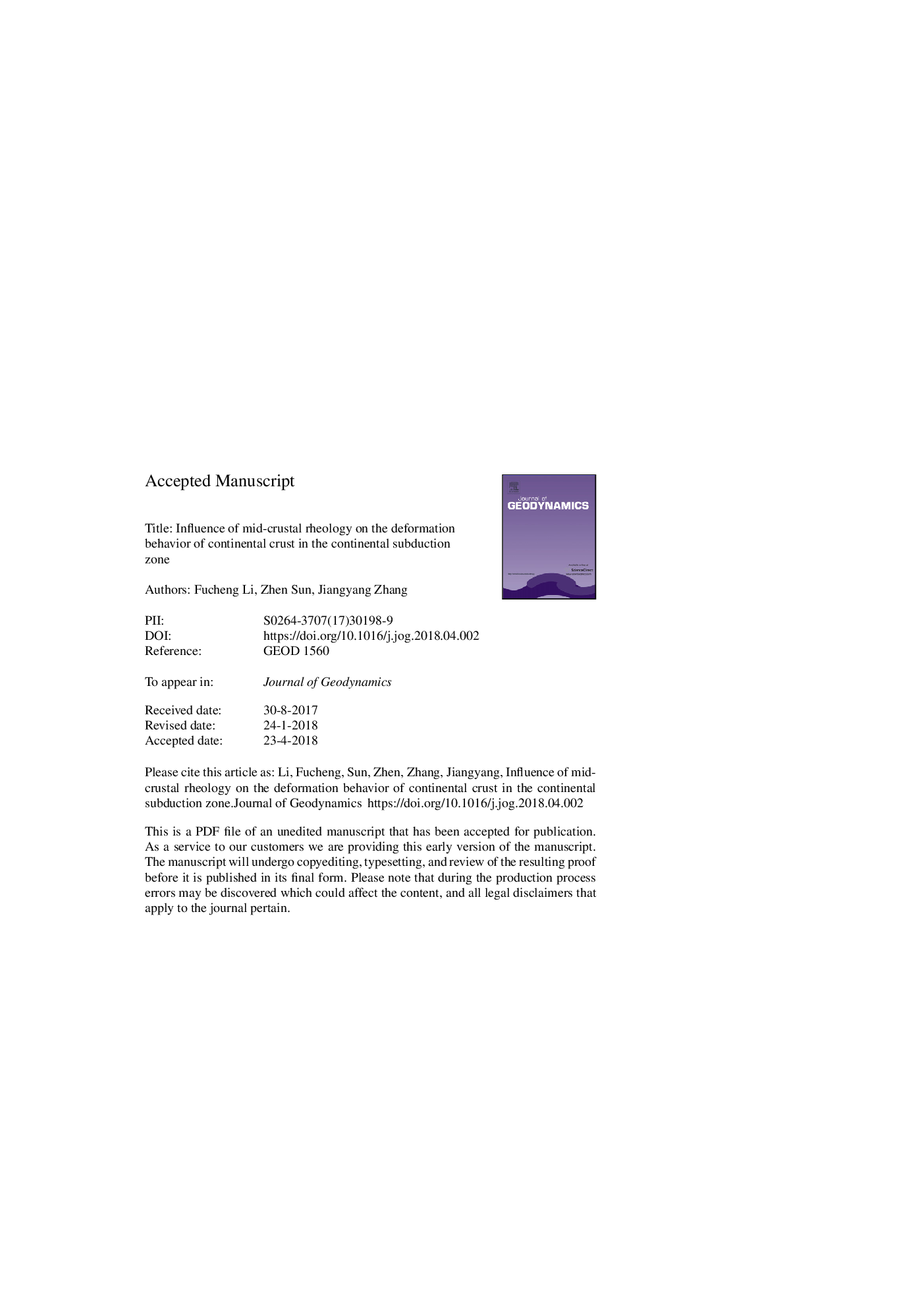| کد مقاله | کد نشریه | سال انتشار | مقاله انگلیسی | نسخه تمام متن |
|---|---|---|---|---|
| 8908411 | 1635733 | 2018 | 28 صفحه PDF | دانلود رایگان |
عنوان انگلیسی مقاله ISI
Influence of mid-crustal rheology on the deformation behavior of continental crust in the continental subduction zone
ترجمه فارسی عنوان
تأثیر واژگونی میانی پوسته در رفتار تغییر شکل پوسته قاره ای در منطقه فرورانش قاره
دانلود مقاله + سفارش ترجمه
دانلود مقاله ISI انگلیسی
رایگان برای ایرانیان
کلمات کلیدی
موضوعات مرتبط
مهندسی و علوم پایه
علوم زمین و سیارات
فرآیندهای سطح زمین
چکیده انگلیسی
Although the presence of low-viscosity middle crustal layer in the continental crust has been detected by both geophysical and geochemical studies, its influence on the deformation behavior of continental crust during subduction remains poorly investigated. To illustrate the crustal deformation associated with layered crust during continental subduction, we conducted a suite of 2-D thermo-mechanical numerical studies with visco-brittle/plastic rheology based on finite-differences and marker-in-cell techniques. In the experiments, we established a three-layer crustal model with a quartz-rich middle crustal layer embedded between the upper and lower continental crust. Results show that the middle crustal layer determines the amount of the accreted upper crust, maximum subduction depth, and exhumation path of the subducted upper crust. By varying the initial effective viscosity and thickness of the middle crustal layer, the further effects can be summarized as: (1) a rheologically weaker and/or thicker middle crustal layer results in a larger percentage of the upper crust detaching from the underlying slab and accreting at the trench zone, thereby leading to more serious crustal deformation. The rest of the upper crust only subducts into the depths of high pressure (HP) conditions, causing the absence of ultra-high pressure (UHP) metamorphic rocks; (2) a rheologically stronger and/or thinner middle crustal layer favors the stable subduction of the continental crust, dragging the upper crust to a maximum depth of â¼100â¯km and forming UHP rocks; (3) the middle crustal layer flows in a ductile way and acts as an exhumation channel for the HP-UHP rocks in both situations. In addition, the higher convergence velocity decreases the amount of subducted upper crust. A detailed comparison of our modeling results with the Himalayan collisional belt are conducted. Our work suggests that the presence of low-viscosity middle crustal layer may be another possible mechanism for absence of UHP rocks in the southern Tibet.
ناشر
Database: Elsevier - ScienceDirect (ساینس دایرکت)
Journal: Journal of Geodynamics - Volume 117, June 2018, Pages 88-99
Journal: Journal of Geodynamics - Volume 117, June 2018, Pages 88-99
نویسندگان
Fucheng Li, Zhen Sun, Jiangyang Zhang,
